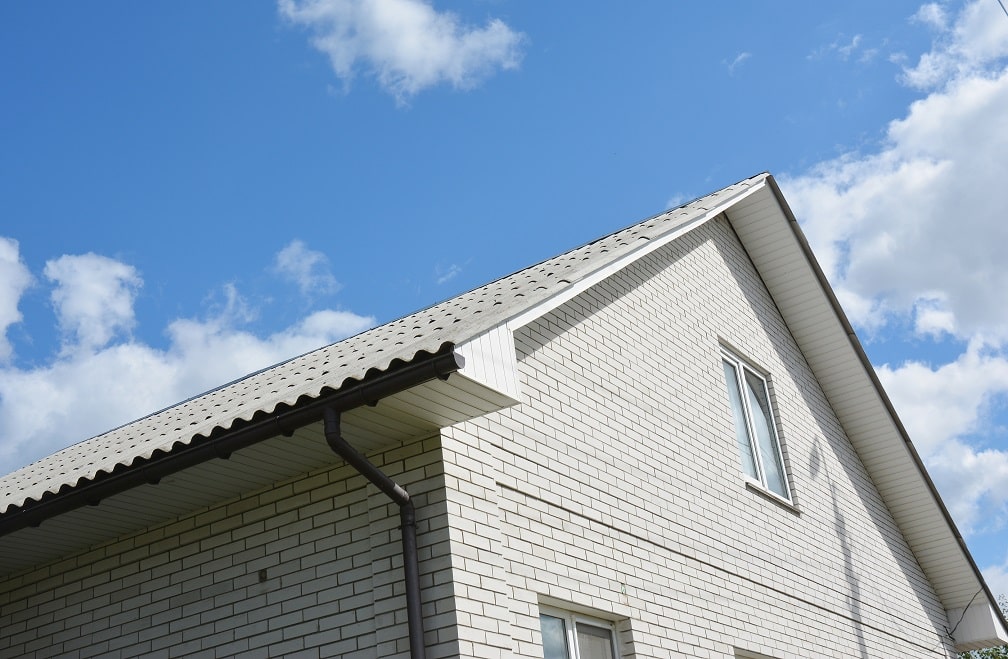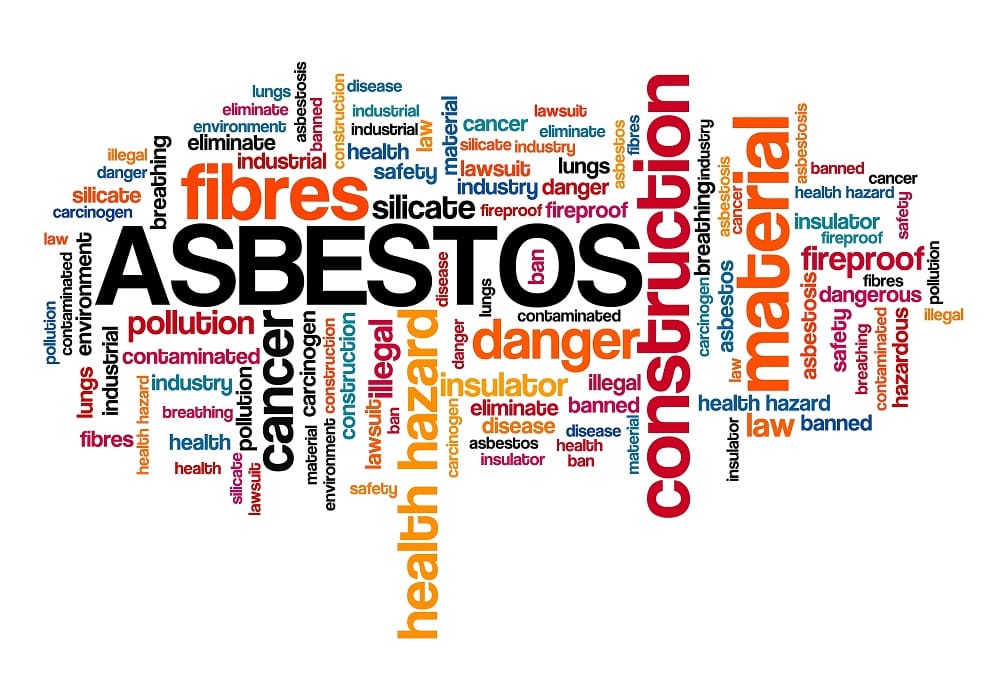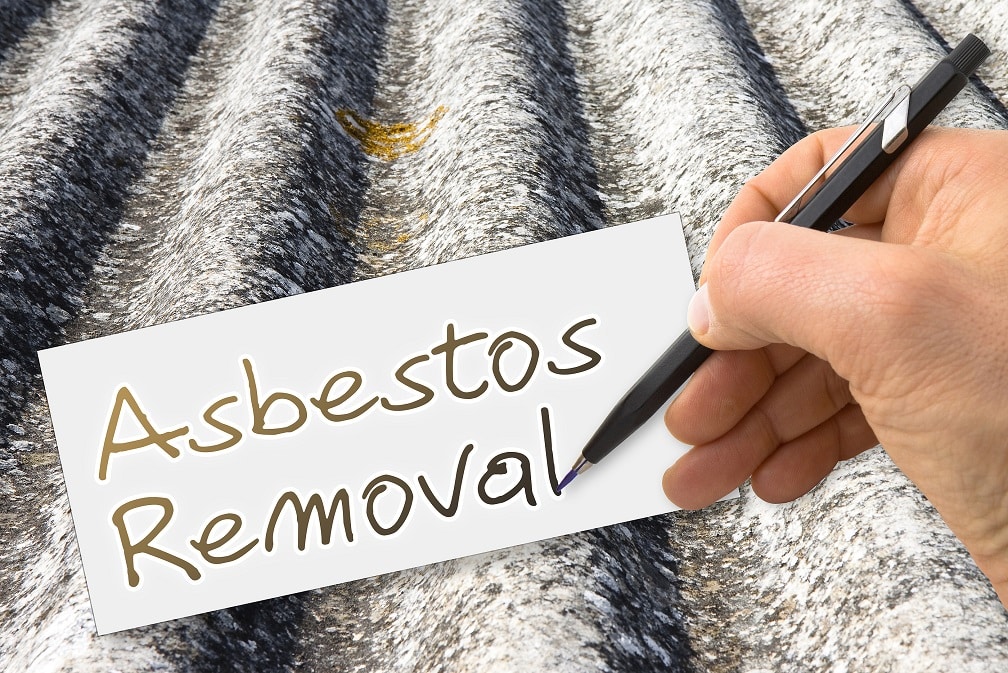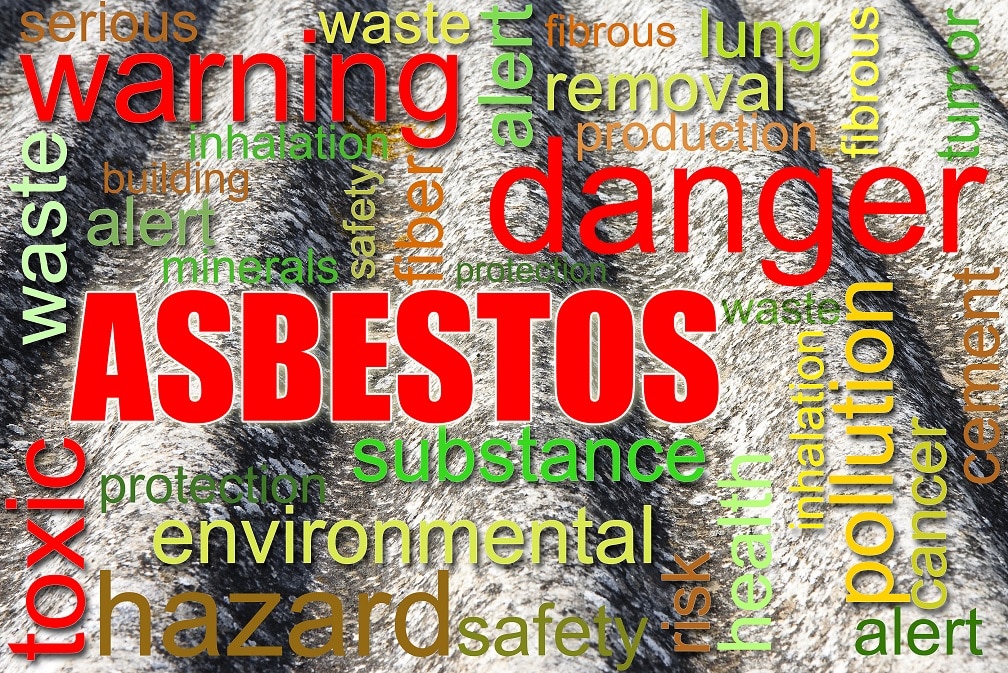Asbestos is a natural mineral composed of thin silicate fibers. For years, it was a house building material favored for its strength and durability. Asbestos materials are also resistant to heat, electricity, and chemicals. When disturbed, asbestos materials produce dust fibers that can become airborne. Inhalation or exposure to these fibers is linked to a range of health concerns that include: asbestosis, lung cancer, mesothelioma, and pleural plaques.
Generally, asbestos-containing materials in good condition will not release asbestos fibers. Bonded asbestos or non-friable asbestos is usually safe. Mixed with small proportions of asbestos (below 15%), bonded asbestos products are rigid and solid; don’t release asbestos fibers into the open air. They pose no danger unless the fibers are disturbed, released, and then inhaled into the lungs.
When asbestos building materials are damaged, the fibers become airborne, and when inhaled, the toxic dust could pose a health risk. After years of continued exposure to those asbestos fibers, victims may develop asbestos or a cancer known as mesothelioma. The cancer forms tumors on the lining of the heart lungs and abdomen.
When does Asbestos Become Dangerous?
The growing awareness about asbestos and its dangers mean that more and more people ask the question: is living in a house with asbestos safe?
Asbestos is at its most hazardous state when friable; when the material is easily crumbled by hand, easily releasing thin fibers into the air. For example, sprayed-on asbestos insulation is very friable, while asbestos floor tile is relatively safe. Friable asbestos building products were used more for soundproofing, roofing, and fireproofing.
The easiest route for dangerous asbestos fibers to enter your body is through inhalation. Asbestos is not generally considered harmful unless it begins to release fibers or dust into the air where people can inhale or ingest them.
Health Effects and Risks
It’s very hard to destroy the tiny asbestos fibers. Your body cannot remove or break them down once they get lodged in the body or lung tissues. The fibers remain inside your body, where they can trigger serious health complications.
Exposure levels depend on the specific type of asbestos and its state. When your body is continuously exposed to crumbly or powdery (friable), poorly maintained, exposed, or damaged asbestos materials, they increase your health risk.
Asbestosis
Asbestos is a severe condition that affects your lungs. Asbestosis can cause shortness of breath, cough, and even permanent damage to the lungs. Other symptoms might include persistent chest pain, and toenails/fingernails that look oddly round or wide. Usually, asbestosis occurs many years after one has regularly breathed in the harmful fibers.
Lung Cancer
Those with asbestosis are more prone to developing lung cancer. It causes the most significant number of fatalities associated with asbestos exposure. The incidence of lung cancer is higher in people directly involved in asbestos mining, milling, manufacturing, and use of asbestos products.
Mesothelioma
Mesothelioma is cancer of the mesothelium. It affects the protective membrane that lines most of your body’s internal organs. Often, however, mesothelioma occurs in the lining of the lungs, the pleura. Asbestos is also known to cause laryngeal and ovarian cancers. Evidence also indicates that cancers in the larynx, oral cavity, esophagus, colon, stomach, and kidney may be linked to ingesting asbestos.
Risk Determining Factors
Although there is no “safe” amount of exposure, most asbestos-containing materials don’t pose an immediate threat. Several factors determine the likelihood of developing any of the asbestos-related diseases or complications.
Amount and Duration of Exposure
Many of the asbestos fibers get trapped in the mucous membranes of your nose and throat. Some may manage to pass deep into your lungs, while others might get swallowed into your digestive tract. Once these fibers are trapped within your body, they can cause health complications.
The more fibers enter your body, and the more you are exposed, the more likely you are to develop asbestos related health problems. Generally, the latency period for most asbestos diseases is 10 to 40 years.
Smoking Exposure
If you are a smoker and exposed to asbestos, your risk of developing lung cancer is higher than someone who doesn’t smoke and hasn’t been exposed to asbestos. Cigarette smoke irritates the lung passages making it harder for your lungs to remove the thin asbestos fibers.
Age Factor
Mesothelioma cases have been recorded in children of people working in the asbestos industry. Their only exposures came from contact with asbestos dust brought home on the clothing of those working with asbestos. The younger people are when the asbestos inhalation happens, the more they are likely to develop mesothelioma.
Risk during DIY Renovations
We are living in an era of DIY home renovations. Homeowners are knocking down walls and ceilings, tearing out old pipes and floor tiles. However, in their efforts to beautify and upgrade their older homes, homeowners might unknowingly contaminate their environment and the air with toxic asbestos fibers.
Owners of older homes should take every precaution to avoid disturbing or damaging materials that might contain asbestos products. Even if the repair seems minor, consider hiring a professional if you think asbestos is present. Improper handling can create a risk even where none was present before.
What can You Do?
The International Agency for Research on Cancer (IARC) and US Environmental Protection Agency (EPA) have declared asbestos a human carcinogen. The best way to avoid asbestos exposure is to know about the asbestos materials within the home, including their current condition and location.
- If something in your home looks like asbestos, avoid touching it.
- Even if it looks like it’s in good condition, your best option is to leave it alone.
- If any asbestos the material looks damaged, contact an accredited and trained asbestos professional.
Conclusion
Since the 70s, the U.S. government has controlled the usage of asbestos. It’s no longer being mined or processed anymore. The Environmental Protection Agency has banned asbestos in flooring felt, paper, fake fireplaces embers, etc. However, asbestos is still used in items such as cement pipes, vinyl floor tiles, brake pads, and even clothes.
Unless you are directly and regularly working with asbestos, your chances of developing asbestos-related diseases or complications are low. However, because each asbestos exposure increases the body burden, it is crucial to minimize or reduce exposure.





